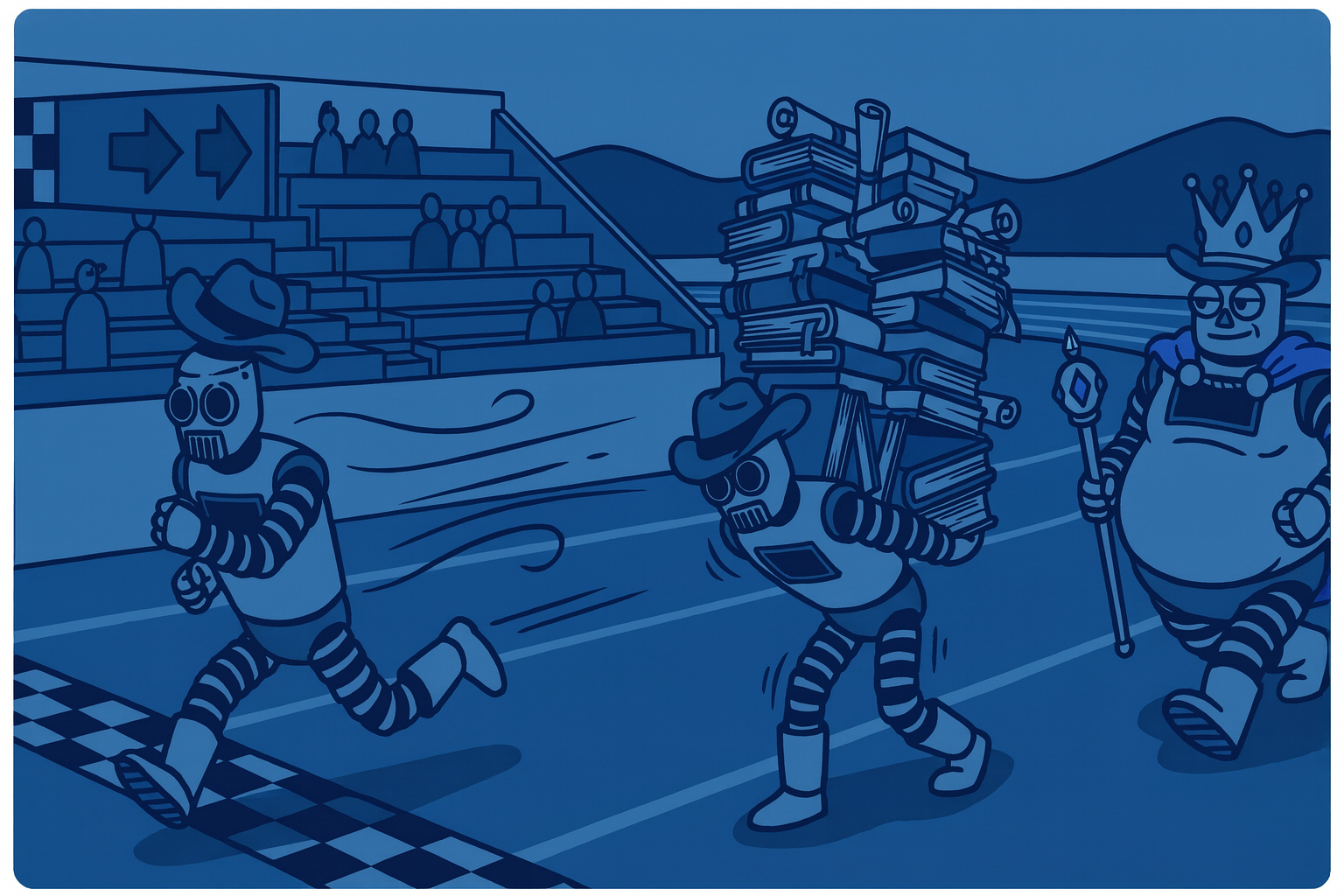Learnings from the Google Prompt Engineering Paper and others

The gap between basic and expert prompt engineering is smaller than you think. While most prompt engineers plateau after mastering basic techniques like "be specific" and "provide examples," the real breakthroughs come from understanding the nuanced capabilities of each model family.
After extensive research into official documentation from OpenAI, Anthropic, Google, Meta, and Microsoft, I found these comprehensive guides that go far beyond the basics. They're deep technical resources that reveal how these models actually work under the hood.
This guide will take you through the five most valuable official resources, highlighting the advanced techniques that can transform your prompting from good to exceptional. Whether you're optimizing for production systems or pushing the boundaries of what's possible, these insights will level up your prompt engineering game.
1. OpenAI's GPT-4.1 Prompting Guide
OpenAI's official prompt engineering guide has evolved significantly with the GPT-4.1 release. The most valuable resource for advanced users is their GPT-4.1 Prompting Guide, which reveals critical insights about the model's enhanced instruction-following capabilities.
Beyond Basic Prompting
The GPT-4.1 family represents a significant leap in literal instruction following.GPT-4.1 follows instructions with surgical precision. This means your prompts need to be more explicit about desired behaviors—a shift that requires prompt migration for optimal results.
Key advanced techniques include:
- Hierarchical instruction processing, where GPT-4.1 resolves conflicting instructions by prioritizing those closer to the end of the prompt. This allows for more precise control over model behavior, especially in multi-step or complex prompts, ensuring that the most recent and relevant instructions take precedence.
- Meta-prompting strategies involve guiding the model to generate and refine its own prompts within a structured framework. By teaching the model how to think about prompting,such as identifying objectives, choosing formats, and iterating,it becomes capable of self-improving its outputs. This technique is powerful for tasks like prompt engineering, automated testing, or recursive problem solving, where adaptability and precision are essential.
- Advanced function calling: enables chaining multiple tool calls with conditional logic, allowing for complex workflows within a single prompt. This approach is ideal for scenarios requiring dynamic decision-making, such as data validation, retrieval, and transformation. When paired with PromptLayer, developers can track, manage, and optimize each function call, ensuring transparency and performance monitoring across every step of the workflow.
Key Takeaway
The most underutilized feature is GPT-4.1's ability to maintain state across complex multi-step reasoning. By structuring your prompts with explicit step markers and state tracking, you can achieve consistent results in tasks that would have been unreliable in earlier models.
2. Anthropic's XML-Based Prompt Architecture
Anthropic's prompt engineering documentation stands out for its systematic approach to prompt structure. Their guides emphasize that Claude was specifically trained with XML tags in the training data, making XML-based structuring a powerful optimization technique.
Advanced Structuring Techniques
The real power comes from understanding how to create semantic hierarchies with XML tags:
<task>
<context>
<document_type>technical_spec</document_type>
<constraints>
<word_limit>500</word_limit>
<technical_level>expert</technical_level>
</constraints>
</context>
<instructions>
<step>Analyze the provided code</step>
<step>Identify optimization opportunities</step>
<step>Provide benchmarked recommendations</step>
</instructions>
</task>Their multishot prompting guide shows that 3-5 diverse examples is the sweet spot! Often outperforming 1-2 examples or 6+
Key Takeaway
The undocumented gem is Claude's response to nested XML structures. By creating hierarchical tags, you can effectively program complex conditional logic directly into your prompts. This is particularly powerful when combined with Claude's 200K token context window for document analysis tasks.
3. Google's Gemini Multimodal Prompting
Google's approach, detailed in their 70-page Gemini for Workspace guide and technical prompt design strategies, introduces the Persona-Task-Context-Format (PTCF) framework.
Cross-Modal Excellence
What sets Gemini apart is its true multimodal nature. The documentation reveals optimal patterns for combining text and image inputs:
- Synchronized prompting: Place images at the beginning of prompts for optimal processing
- The 21-word principle: Google's research shows prompts averaging 21 words with relevant context significantly outperform both shorter and longer variants
- Structured prompt templates: Using consistent formatting improves response reliability by up to 40%
Key Takeaway
Gemini's unique strength lies in its integration capabilities. By leveraging the @file notation to reference Google Workspace documents directly in prompts, you can create dynamic, context-aware systems that adapt to changing data sources—a capability unique to the Gemini ecosystem.
4. Meta's Llama System Prompt Engineering
Meta's Llama documentation is a great resource for open-source model optimization. Unlike commercial models, Llama's transparency allows for you to optimize based on its training.
Open-Source Optimization
Advanced Llama techniques focus on exploiting the model's specific training patterns:
- Special token mastery: Tokens like <|start_header_id|> and <|eot_id|> trigger specific model behaviors
- Infilling optimization: Only available in 7B and 13B base models, code infilling uses specialized prefix-suffix-middle formatting
- Base vs. instruction-tuned selection: Knowing when to use base models (for creative tasks) versus instruction-tuned variants (for task completion)
Key Takeaway
Llama has a hidden strength from its XML training. You can unlock better performance by using XML-style formatting in your prompts. This works because Llama learned these patterns during training. You don't even need actual XML tags to see the benefits
5. Microsoft's Enterprise-Grade Patterns
Microsoft's Azure OpenAI documentation focuses on production-ready implementations with enterprise requirements in mind.
Production-Ready Techniques
Microsoft's guide excels in addressing real-world constraints:
- Advanced grounding strategies: Moving beyond basic RAG with multi-document synthesis and verification chains
- System message architecture: Detailed templates for multi-paragraph system prompts that maintain consistency across sessions
- Cost-performance optimization: Specific patterns for balancing quality with token usage
Key Takeaway
The most valuable insight is Microsoft's approach to prompt versioning and A/B testing. Their framework for systematically testing prompt variations in production environments provides a scientific approach to prompt optimization that many engineers overlook.
My Synthesis
After analyzing all five guides, four universal principles emerge:
- Structure beats verbosity: Whether XML tags, special tokens, or formatted sections, structured prompts consistently outperform free-form instructions
- Model-specific optimization matters: Each model family has unique characteristics that can be exploited for better results
- Context window management is crucial: Understanding how each model processes long contexts can dramatically improve performance
- Systematic testing wins: The best prompt engineers maintain libraries of test patterns for different use cases
PromptLayer is an end-to-end prompt engineering workbench for versioning, logging, and evals. Engineers and subject-matter-experts team up on the platform to build and scale production ready AI agents.
Made in NYC 🗽
Sign up for free at www.promptlayer.com 🍰



